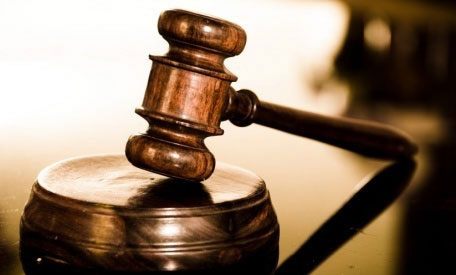Tapping the Scales of Justice - A Dose of Connecticut Legal History
 While a single young woman, Katherine Harrison worked as a servant to Captain John Cullick of Hartford. She read a book about fortune telling by the British astrologer
William Lilly, and she tried to predict the other servants' fortunes for them. One of her predictions concerning whom one of the servants would marry came true; this
incident and other accusations would eventually become the basis of a witchcraft case against her.
While a single young woman, Katherine Harrison worked as a servant to Captain John Cullick of Hartford. She read a book about fortune telling by the British astrologer
William Lilly, and she tried to predict the other servants' fortunes for them. One of her predictions concerning whom one of the servants would marry came true; this
incident and other accusations would eventually become the basis of a witchcraft case against her.
Katherine later married John Harrison, who was the Wethersfield town crier and a wealthy landowner. When John died in August of 1666, he bequeathed Katherine and
their three daughters his large estate. Her neighbors disliked Katherine, and she claimed they vandalized her estate after her husband's death. She was also embroiled
in multiple lawsuits with them before and during her witchcraft trial: Michael and Ann Griswold sued her for slander in the fall of 1668, and she had an ongoing legal
dispute with John Chester over a plot of land.
On October 12, 1669 a jury found Katherine guilty of witchcraft. Despite the guilty
finding, the court hesitated to execute her. Instead, the judge called on a panel of
ministers for advice on establishing rules of evidence and to formulate procedures that
made it more difficult to convict someone of witchcraft.
At the time, witchcraft was considered a crimen exceptum (a special type of crime that did
not require a trial with normal judicial procedures or standards of proof). In other types
of criminal cases, two witnesses needed to be present in order to convict, but when accused
of witchcraft, only one witness was necessary. The ministers believed witchcraft was real,
but they also believed it was possible the Devil could deceive a witness and make them think
they saw someone perform witchcraft. However, they reasoned that God wouldn't allow two witnesses
to be fooled.
According to historian Alison Games: "The skepticism of the Connecticut Court, then, was embedded in a very particular culture: one that was concerned about legal practices and the use of evidence
but that also based its conclusions on assumptions about what God or Satan would - or could - do." (Games, Witchcraft in Early North America, page 87).
In the end, Katherine was released with the understanding that she would pay a fine and leave Wethersfield
for her own safety and to appease her neighbors. Katherine went on to live in Westchester, New York, though
she may have returned to Wethersfield before her death in 1682.
_________________________
Sources of Information:
Games, A. Witchcraft in Early North America Lanham, Md: Rowman & Littlefield
Publishers, 2010
Karleson, C. The Devil in the Shape of a Woman: Witchcraft in Colonial New England
New York: Norton, 1987
Samuel Wyllys Papers, Connecticut State Library, State Archive, 1908.
R.G. Tomlinson, "Witchcraft Trials Of Connecticut", (1978)
Colonial Connecticut Records 1636-1776, Katherine Harrison's Release
See page 132 footnote.
For more Information:
Research Guide to Colonial Witchcraft Trial Materials at the Connecticut State Library
Doses of Connecticut Legal History